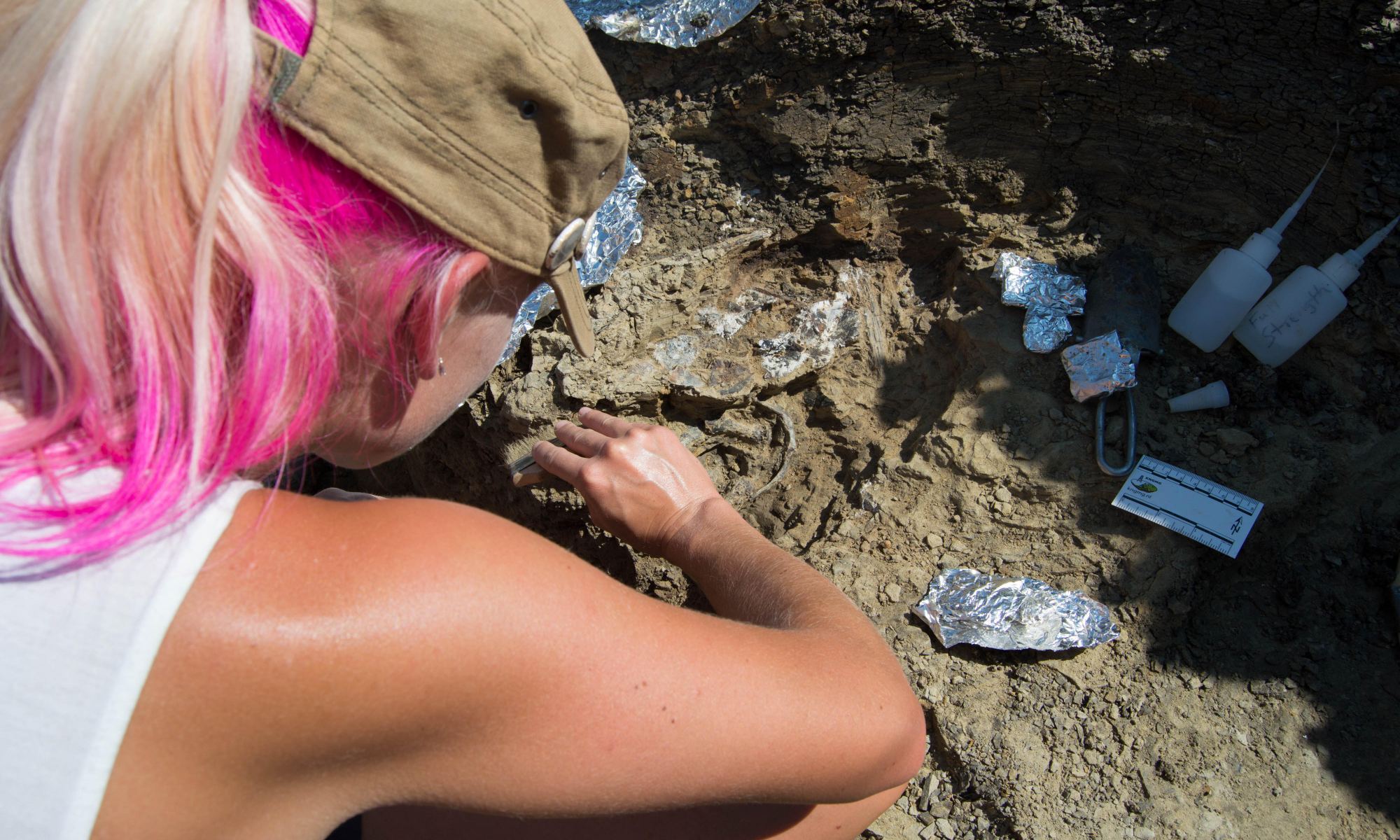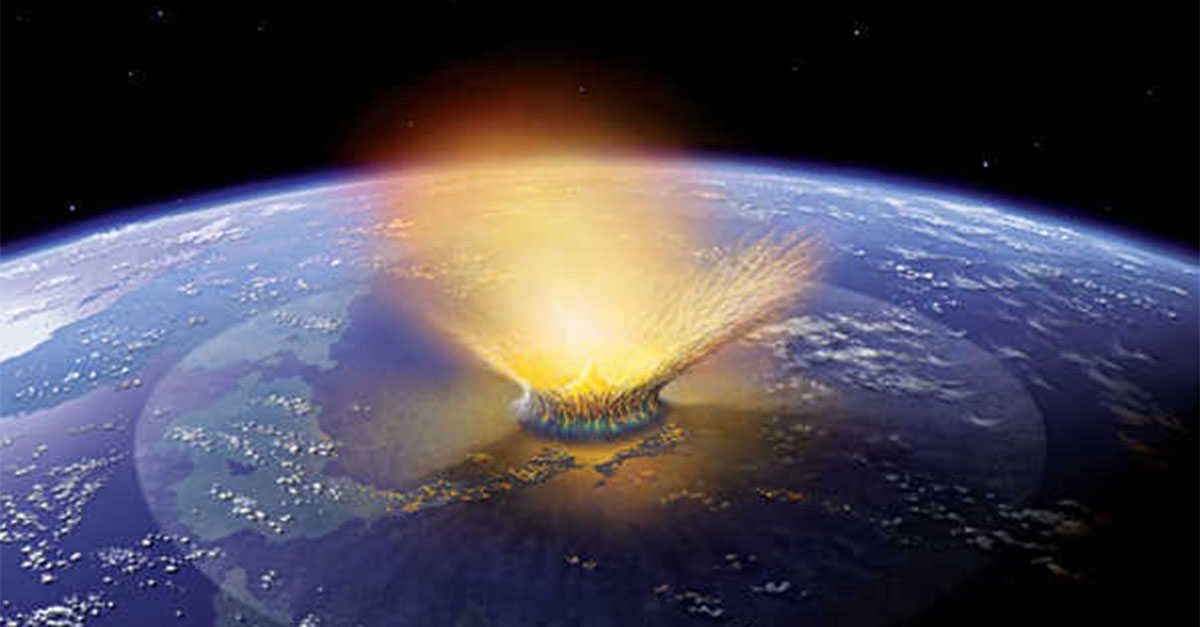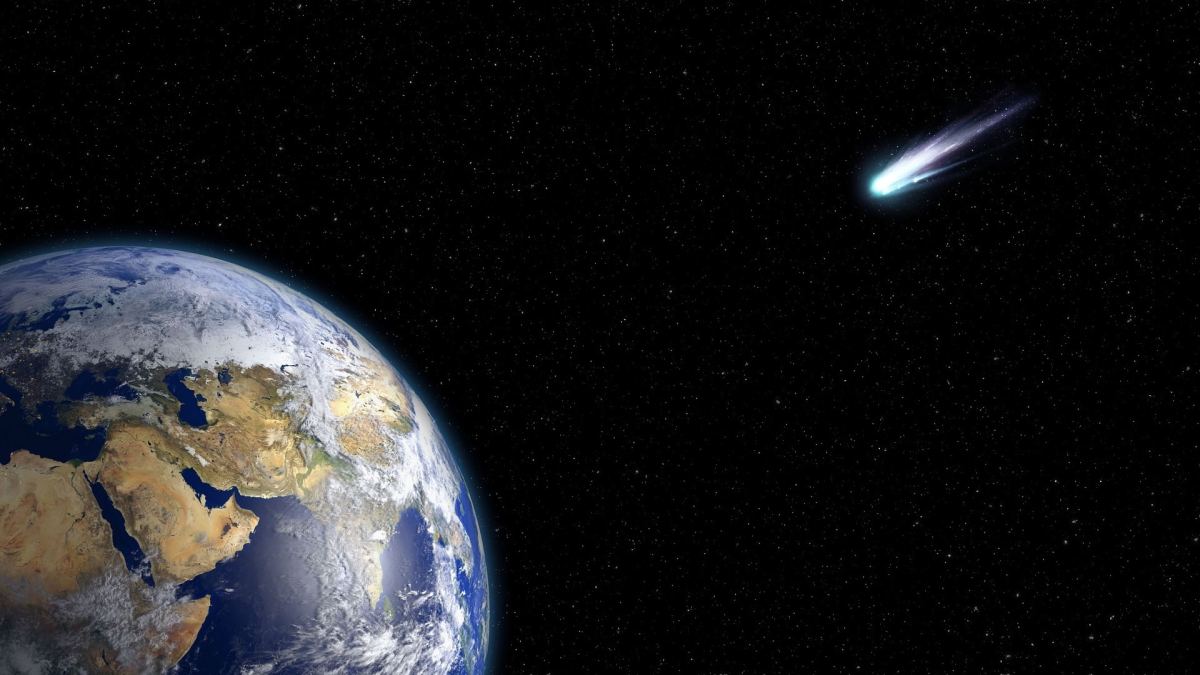The Earth has always been bombarded with rocks from space. It’s true to say though that there were more rocks flying around the Solar System during earlier periods of its history. A team of researchers have been studying a meteorite impact from 3.26 billion years ago. They have calculated this rock was 200 times bigger than the one that wiped out the dinosaurs. The event would have triggered tsunamis mixing up the oceans and flushing debris from the land. The newly available organic material allowed organisms to thrive.
Continue reading “A Giant Meteorite Impact 3.26 Billion Years Ago Helped Push Life Forward”Devastating Clouds of Dust Helped End the Reign of the Dinosaurs

When a giant meteor crashed into Earth 66 million years ago, the impact pulverized cubic kilometers of rock and blasted the dust and debris into the Earth’s atmosphere. It was previously believed that sulfur from the impact and soot from the global fires that followed drove a global “impact winter” that killed off 75% of species on Earth, including the dinosaurs.
A new geology paper says that the die-off was additionally fueled by ultrafine dust created by the impact which filled the atmosphere and blocked sunlight for as long as 15 years. Plants were unable to photosynthesize and global temperatures were lowered by 15 degrees C (59 F).
Continue reading “Devastating Clouds of Dust Helped End the Reign of the Dinosaurs”The Asteroid That Killed the Dinosaurs Also Flooded the World's Coastlines With a Catastrophic Tsunami

For decades, scientists have theorized that a massive impact caused the Cretaceous-Paleogene extinction event. This event occurred about 66 million years ago and caused the mass extinction of about 75% of all plant and animal species on Earth (including the non-avian dinosaurs). With the discovery of the massive Chicxulub crater in the Yucatan Peninsula (southern Mexico) in the 1970s, scientists concluded that they’d found the impact responsible. Based on all the available data, the Chicxulub Impact event is believed to have been as powerful as 100,000 billion metric tons (110,231 U.S tons) of TNT.
This blast was more powerful than all the nuclear devices in the world combined and sent an estimated 25 trillion metric tons (~27.5 US tons) of hot dust, ash, and steam into the atmosphere, creating a global winter. But according to new research led by the University of Michigan, an international team of geologists has determined that the impact also created a global tsunami. According to their findings, this tsunami was 30,000 times more powerful than the 2004 Indian Ocean tsunami, one of the largest and most devastating tsunamis on record.
Continue reading “The Asteroid That Killed the Dinosaurs Also Flooded the World's Coastlines With a Catastrophic Tsunami”We don’t Know Exactly When the Dinosaurs Died, but Now We Know it was in the Springtime
We’ve long known a disaster took place about 66 million years ago, where in a geological instant, 75% of the plants and animals on Earth were wiped out, including all the land-roaming dinosaurs. But here’s a new detail about that event: Even though we can’t pinpoint exactly what year this disaster took place, we now know it happened during the springtime.
Continue reading “We don’t Know Exactly When the Dinosaurs Died, but Now We Know it was in the Springtime”Scientists Figure out how the Asteroid Belt Attacked the Dinosaurs
How do you track an asteroid that hit the Earth over 60 million years ago? By using a combination of geology and computer simulations, at least according to a team of scientists from the Southwest Research Institute (SwRI). Those methods might have let them solve a long-standing mystery of both archeology and astronomy – where did the asteroid that killed the dinosaurs come from?
Continue reading “Scientists Figure out how the Asteroid Belt Attacked the Dinosaurs”Did a Comet Wipe out the Dinosaurs?
About 66 million years ago a massive chunk of rock slammed into Earth in what is the modern-day Yucatan Peninsula. The impact extinguished about 75% of all life on Earth. Most famously, it was the event that wiped out the dinosaurs.
While mainstream scientific thought has pointed to an asteroid as the impactor, a new research letter says it could’ve, in fact, been a comet.
Continue reading “Did a Comet Wipe out the Dinosaurs?”There’s a Vast Microbial Ecosystem Underneath the Crater that Wiped Out the Dinosaurs

How did life arise on Earth? How did it survive the Hadean eon, a time when repeated massive impacts excavated craters thousands of kilometres in diameter into the Earth’s surface? Those impacts turned the Earth into a hellish place, where the oceans turned to steam, and the atmosphere was filled with rock vapour. How could any living thing have survived?
Ironically, those same devastating impacts may have created a vast subterranean haven for Earth’s early life. Down amongst all those chambers and pathways, pumped full of mineral-rich water, primitive life found the shelter and the energy needed to keep life on Earth going. And the evidence comes from the most well-known extinction event on Earth: the Chicxulub impact event.
Continue reading “There’s a Vast Microbial Ecosystem Underneath the Crater that Wiped Out the Dinosaurs”800 Million Years Ago, it Was Raining Asteroids on the Earth and Moon
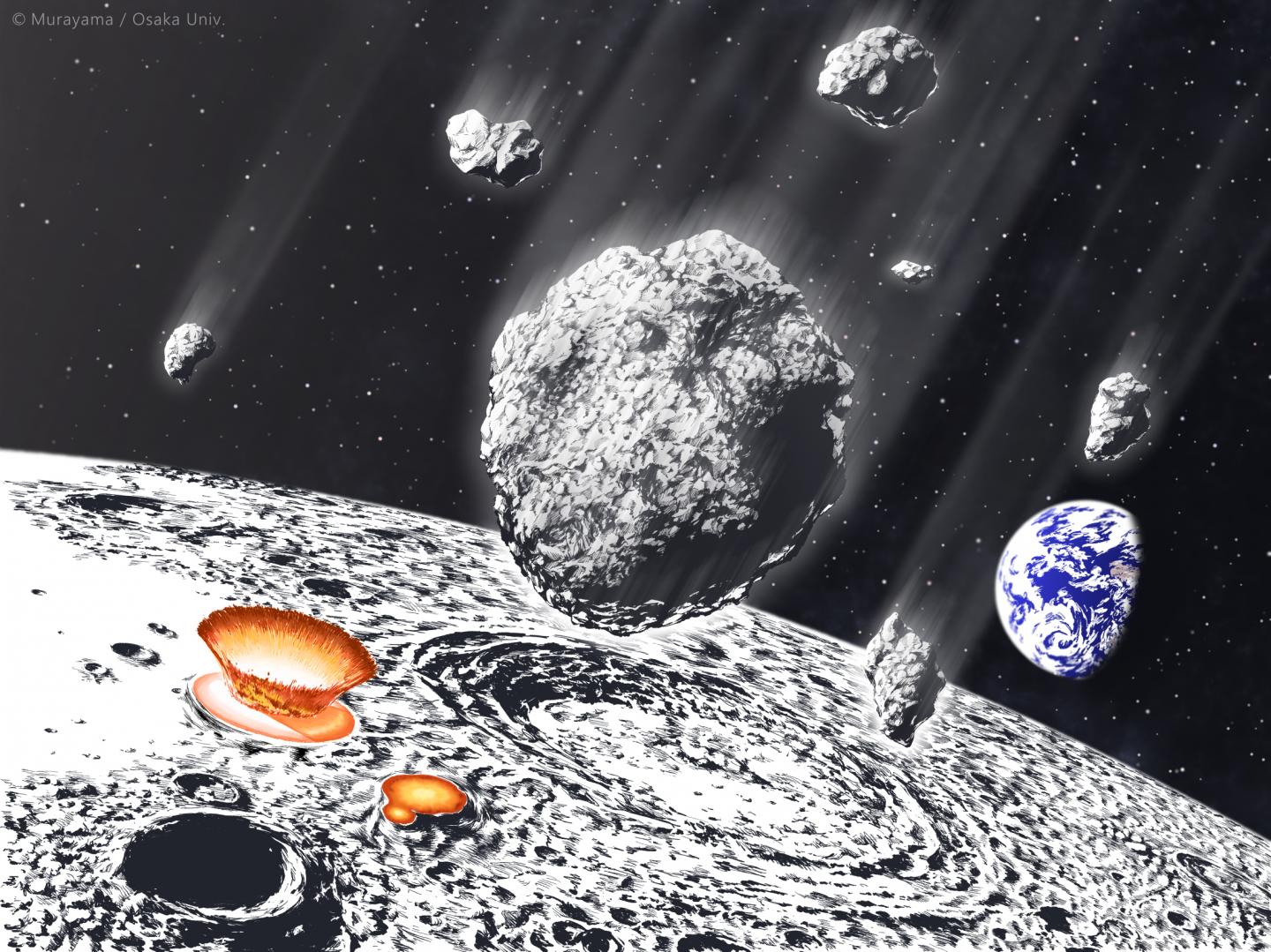
Natural processes here on Earth continually re-shape the planet’s surface. Craters from ancient asteroid strikes are erased in a short period of time, in geological terms. So how can researchers understand Earth’s history, and how thoroughly it may have been pummeled by asteroid strikes?
Scientists can turn their attention to our ancient companion, the Moon.
Continue reading “800 Million Years Ago, it Was Raining Asteroids on the Earth and Moon”It Was Almost Certainly an Asteroid Impact that Wiped Out the Dinosaurs. In Fact, Volcanoes Might Have Helped Life Recover

It seems almost certain that an asteroid impact wiped out the dinosaurs. But only almost. Another competing theory won’t completely go away: the extinction-by-volcano theory.
A new study from the UK piles more evidence on the asteroid side of the debate, while adding a new volcanic twist. These researchers say that volcanic activity actually helped life recover from the asteroid strike.
Continue reading “It Was Almost Certainly an Asteroid Impact that Wiped Out the Dinosaurs. In Fact, Volcanoes Might Have Helped Life Recover”The Meteor Impact that Wiped Out the Dinosaurs Created a Vast Underground Hydrothermal System
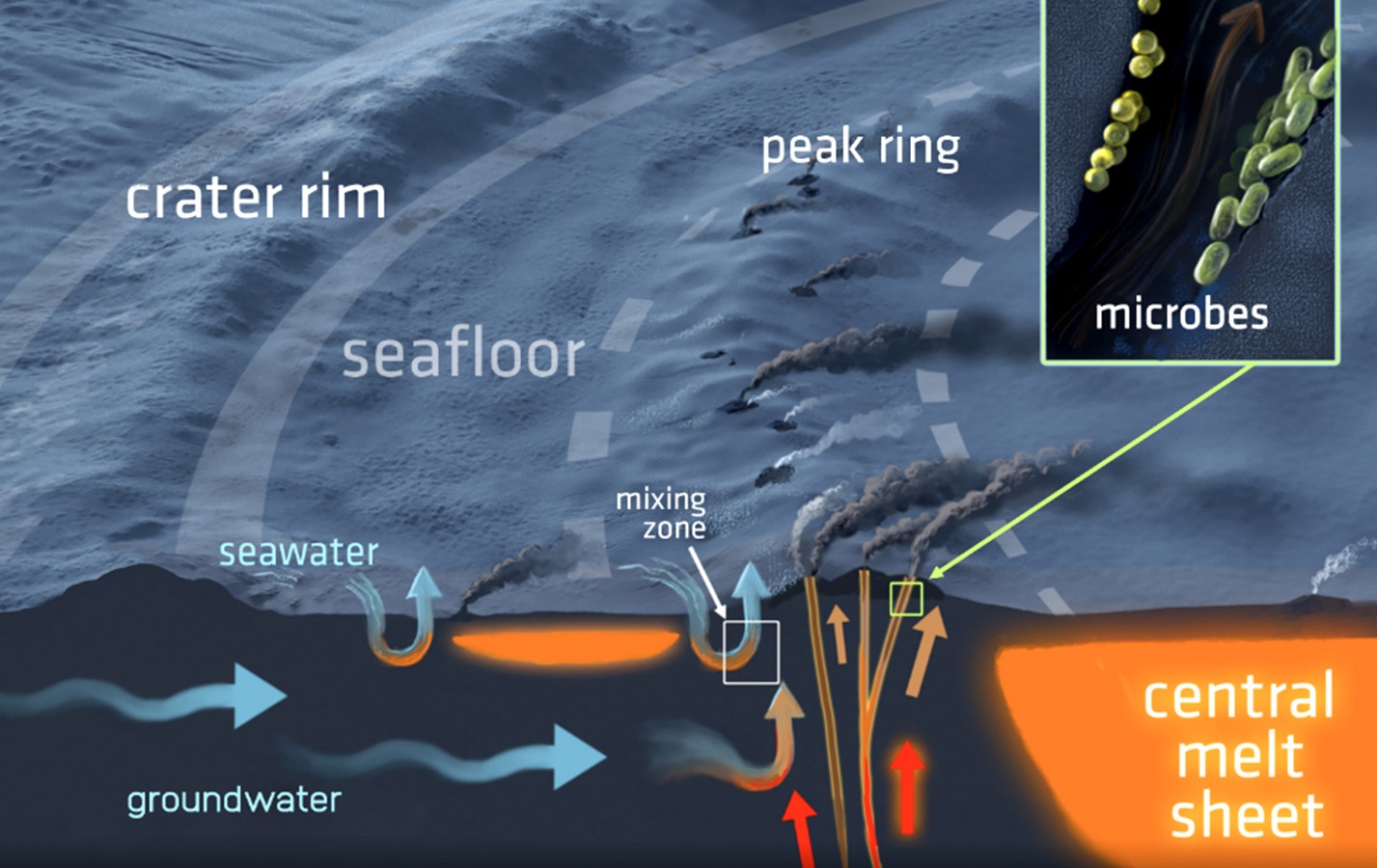
The Chicxulub impact event was an enormous catastrophe that left a huge imprint on the Earth’s surface. Not only did it cause the mass extinction of the dinosaurs, it left a crater 180 km (112 miles) in diameter, and deposited a worldwide layer of concentrated iridium in the Earth’s crust.
But a new study shows that the impact also left its mark deep underground, in the form of a vast hydrothermal system that modified a massive chunk of the Earth’s crust.
Continue reading “The Meteor Impact that Wiped Out the Dinosaurs Created a Vast Underground Hydrothermal System”

